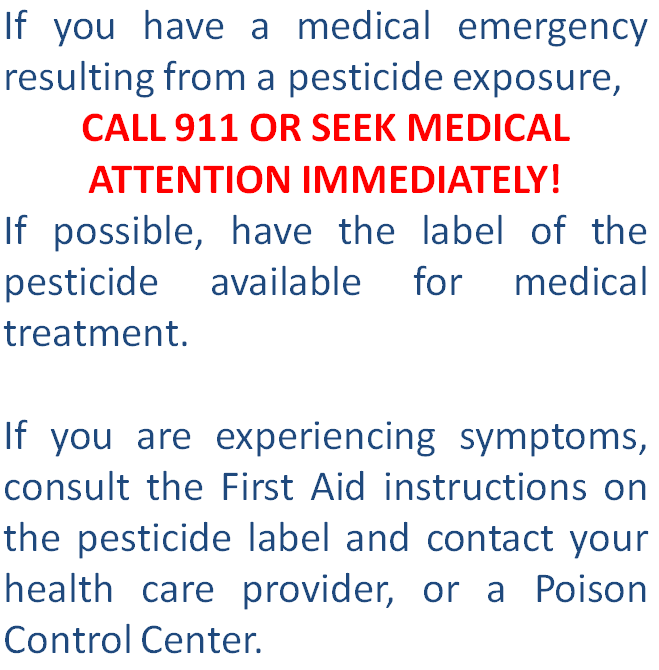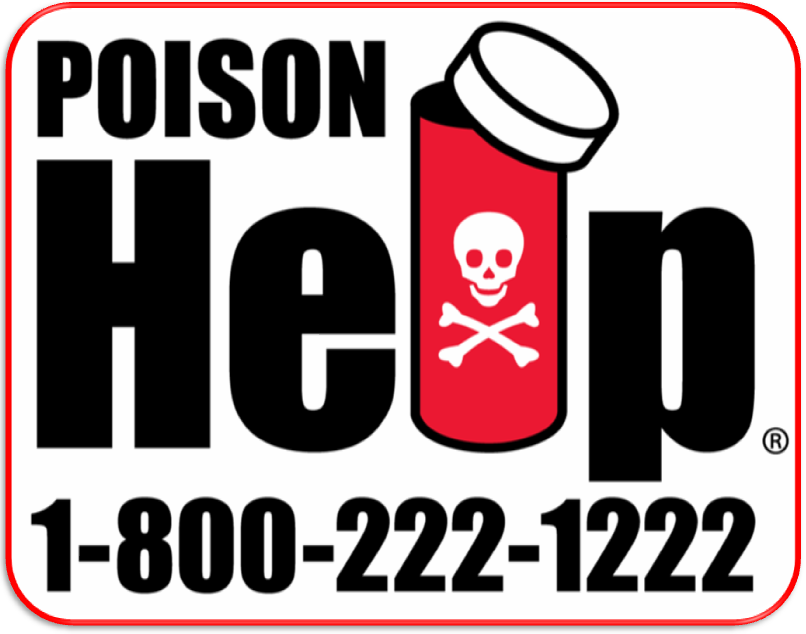Reporting Pesticide Incidents and Bee Nuisances
PESTICIDE INCIDENTS
The Pesticide Control Office is responsible for investigating incidents of unintended exposure and harm from pesticides. There are many types and causes of pesticide incidents. Pesticide Control Office staff investigate pesticide incident reports involving people (including children and farm workers), pets, domestic animals, wildlife including bees and other pollinators, and the environment (air, soil, and water).
Incidents can result from use according to label directions as well as when a pesticide is misused or used incorrectly. People can experience unintentional pesticide exposures in a number of ways, including:
- Incorrectly following label instructions.
- Applying too much pesticide product.
- Applying pesticide product in breezy conditions.
- Not following label safety instructions when using a pesticide. Wearing rubber gloves and protective eyewear can prevent over-exposure.
- Improperly using a pesticide. For example, staying in the rooms where foggers are used, or using outdoor use products inside your house.
- Bringing pesticides into your home on your clothing after working in treated fields.
- Storing pesticides in an unsecured place that children and pets can access.
- Other accidental exposures, such as from spills.
- Not wearing recommended personal protective equipment (for example, rubber gloves, protective eyewear, long pants, long-sleeved shirts).
- Equipment malfunction.
- Accidental exposure from aerial treatment or spray drift.
- Post-application exposure from a treated area.
Pets, domestic animals and wildlife (such as mammals, birds, fish, insects and plants) can experience unintentional exposure to pesticides. Examples of how this can happen include:
- When too much pesticide is applied to pets or domestic livestock.
- When wildlife consume pesticide contaminated water or food.
- When agricultural pesticide runs off or drifts from the agricultural area into water or other wildlife habitat.
The environment (air, soil and water) can be contaminated by pesticide overuse, spills, leaking storage tanks, rainwater runoff from over-treated areas, spray drift, and improper disposal of pesticides, among other ways. Pesticides can enter ground and surface waters (streams, rivers) that people and wildlife use for drinking water and can also harm aquatic life (e.g., plants, fish, crabs, shellfish).
To report an incident of pesticide exposure, damage from a pesticide, or a pesticide spill, please complete and submit a Request for Services Form to the GRIC.Pesticide.Office@gric.nsn.us or contact the Pesticide Control Office at: (520) 562-2234.
BEE NUISANCES
The Pesticide Control Office is responsible for investigating bee activity that presents a nuisance to the Community. Bee activity may be a result of wild bees, or from managed bee apiaries. Pesticide Control Office staff investigate reports of bee nuisances to protect the public health and safety of the Community and of all individuals living or working within the Community.
To report a bee nuisance, please complete and submit a Bee Nuisance Complaint Intake Form to the GRIC.Pesticide.Office@gric.nsn.us or contact the Pesticide Control Office at: (520) 562-2234.


